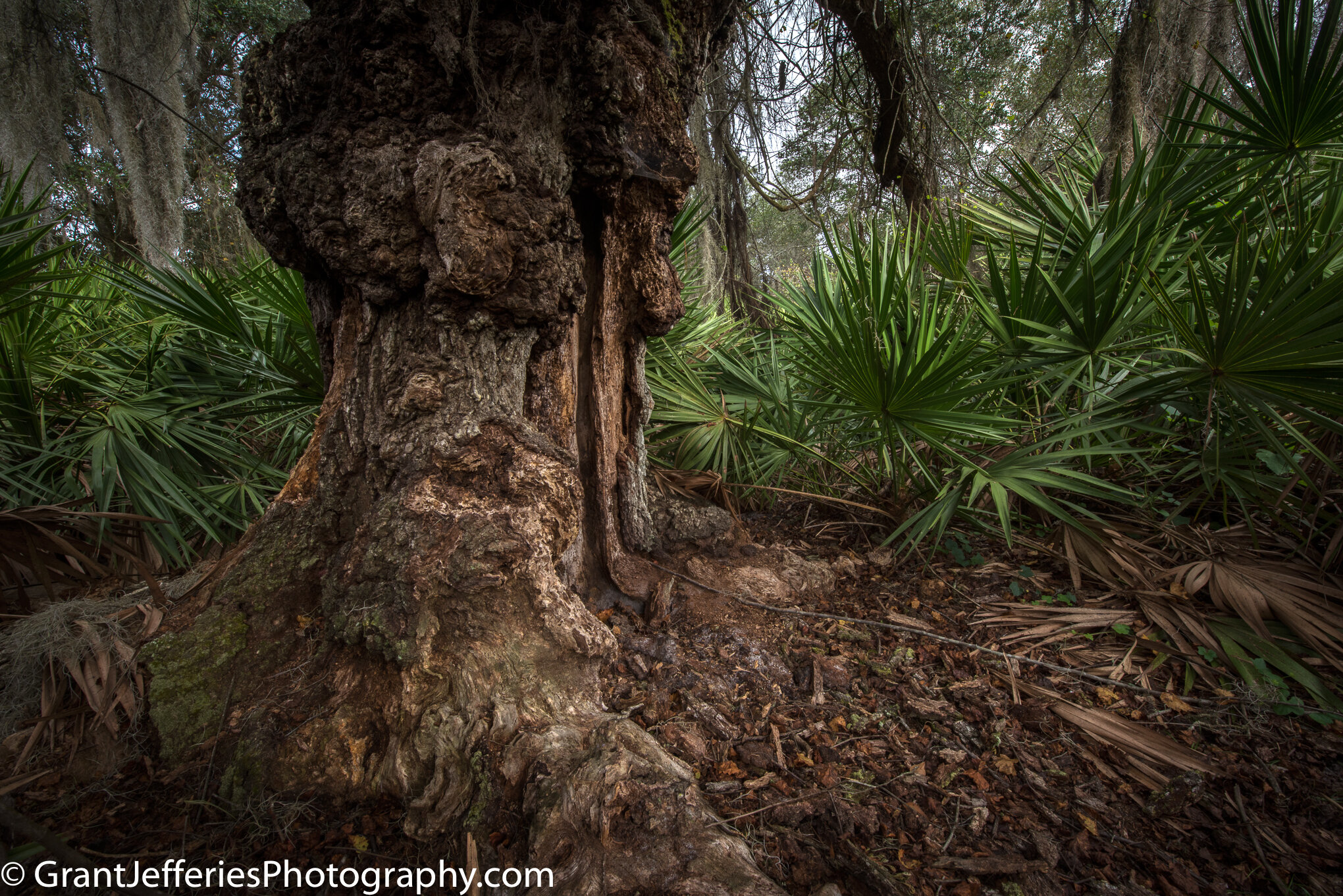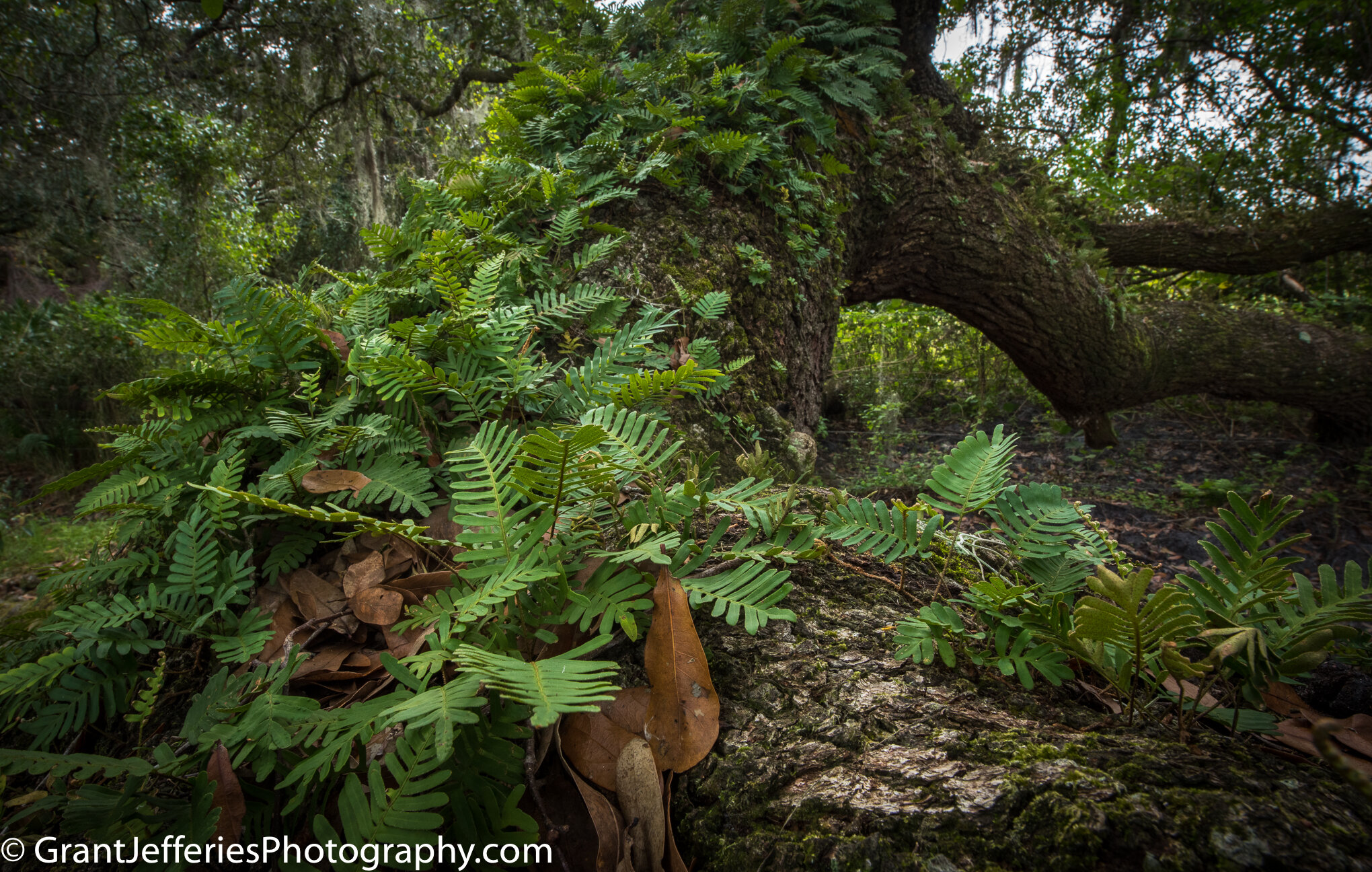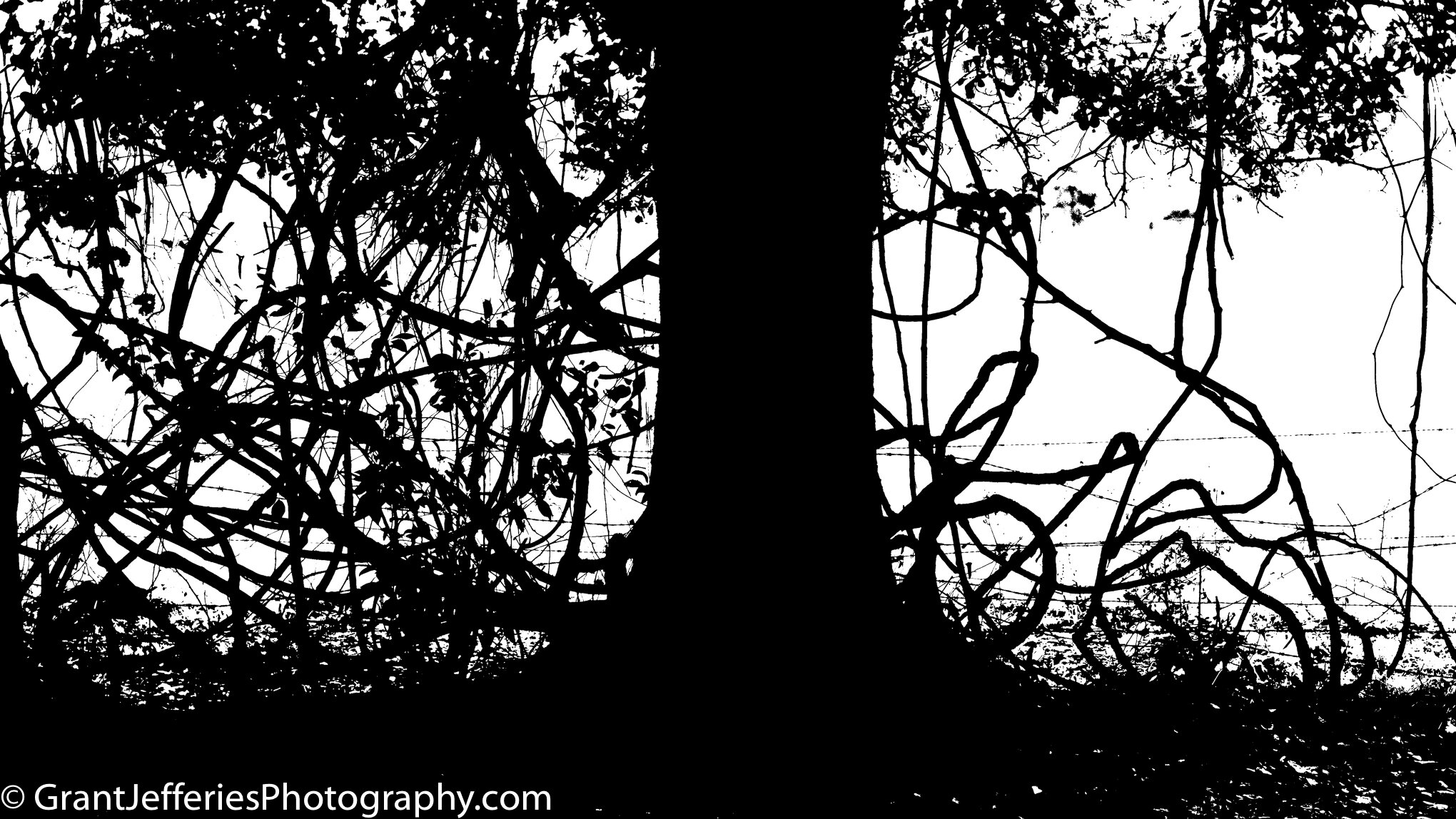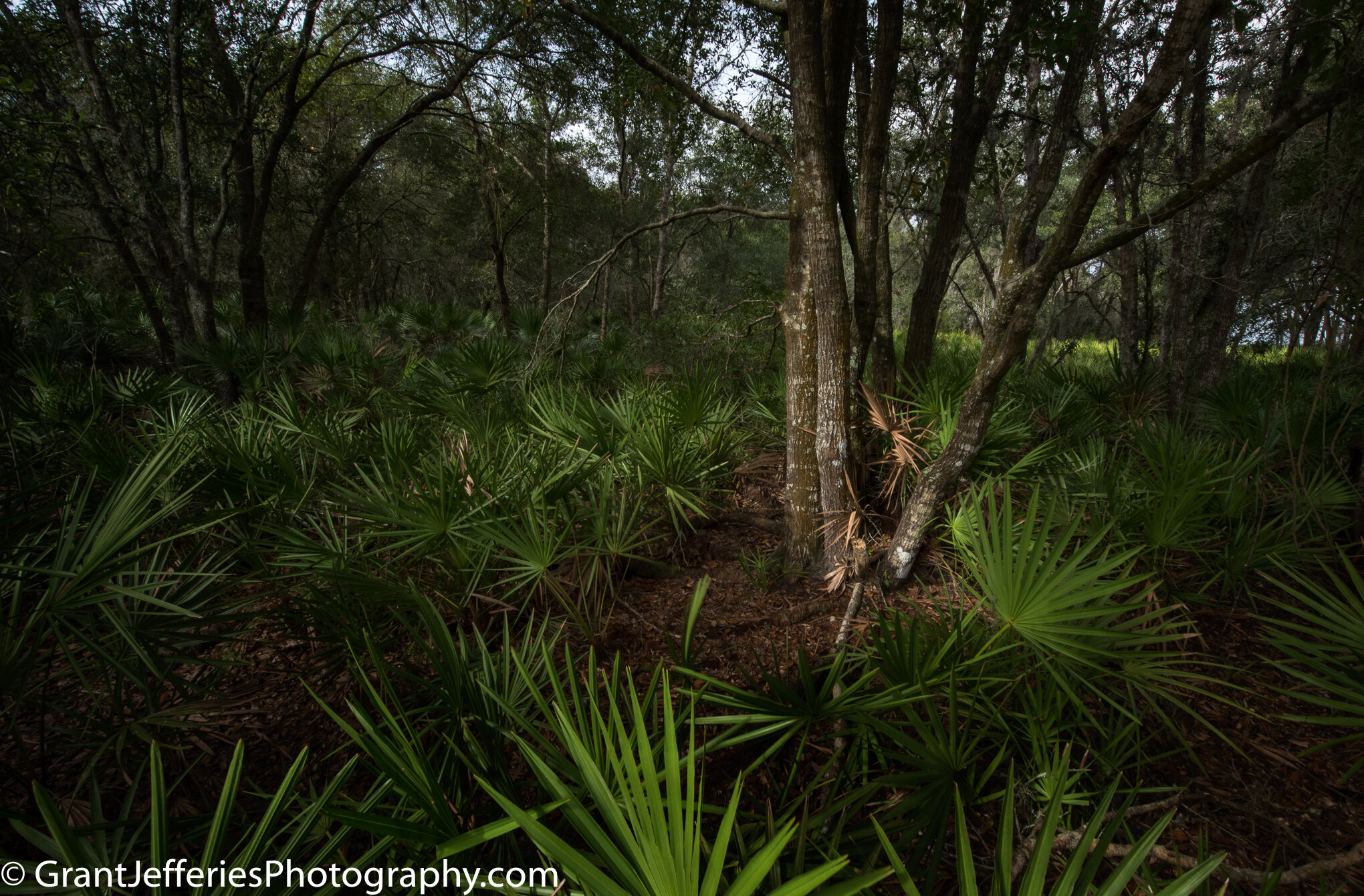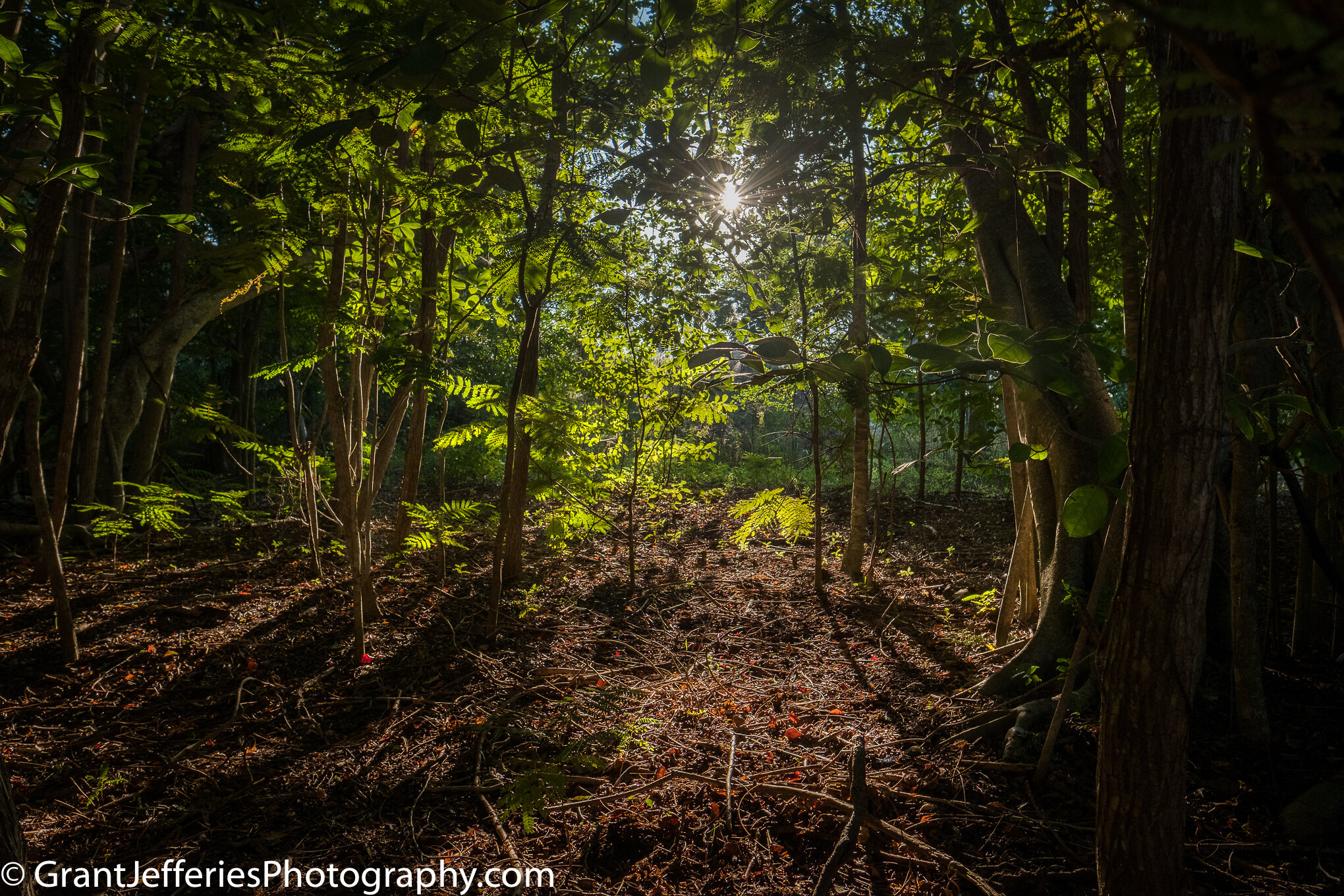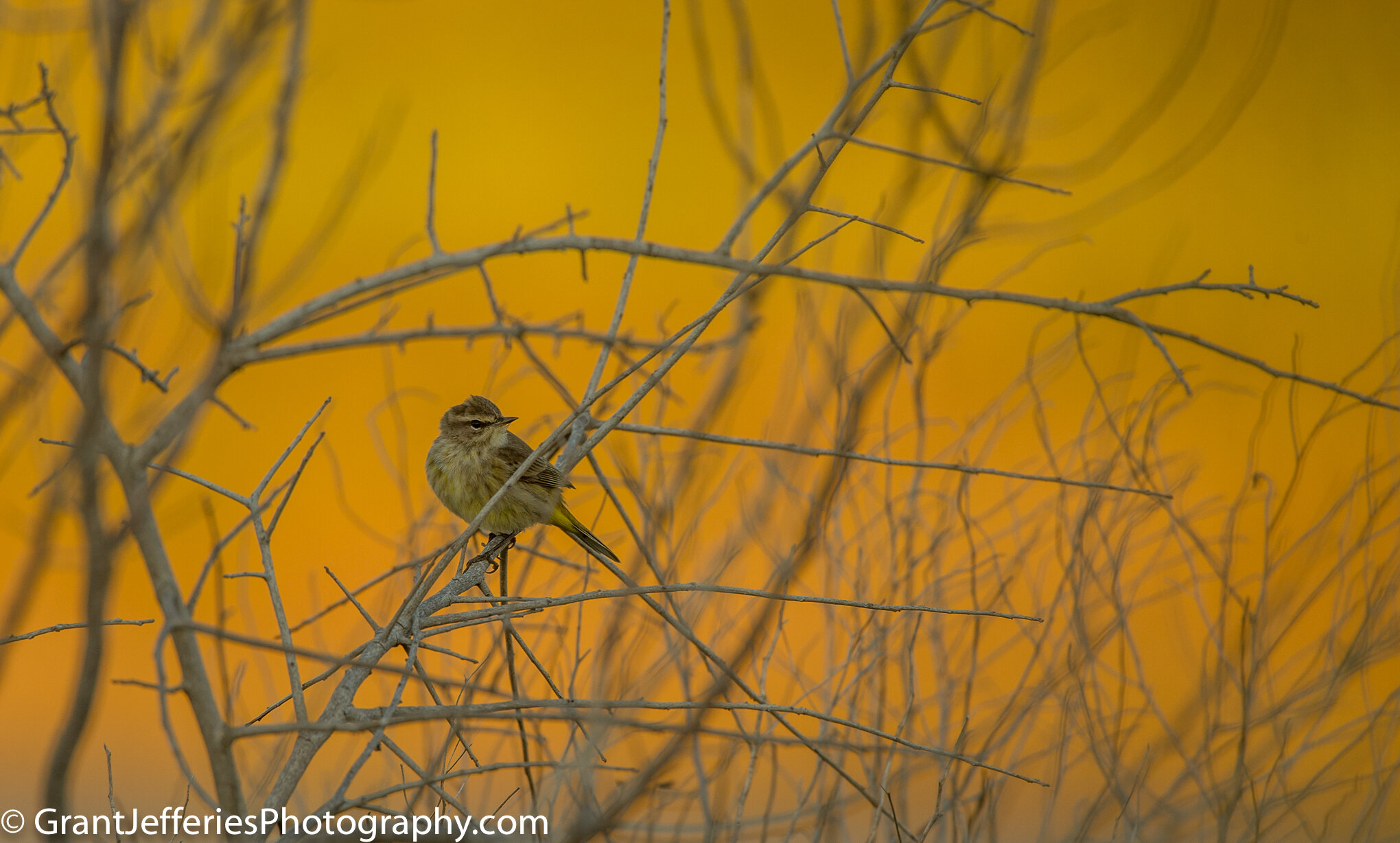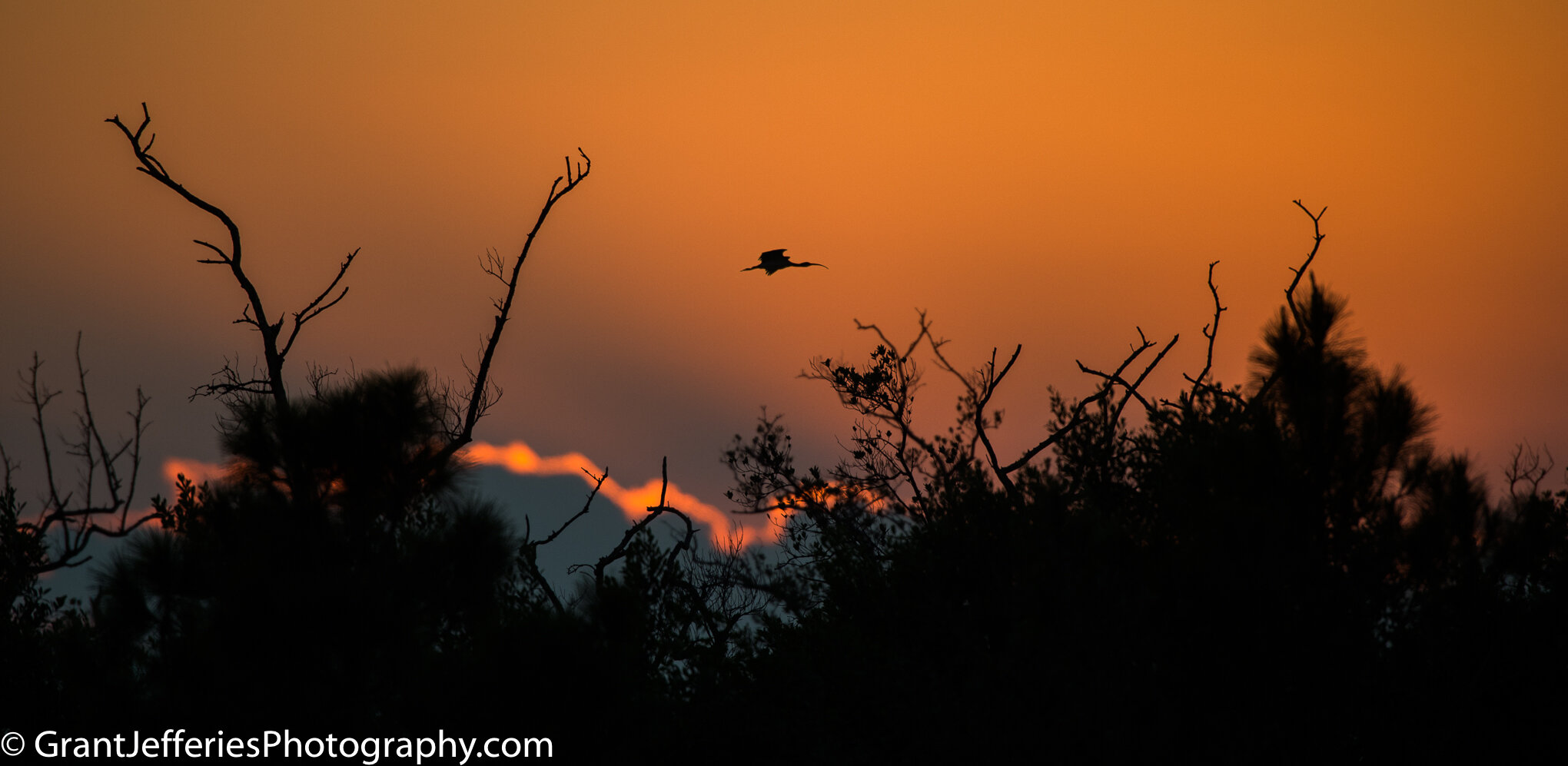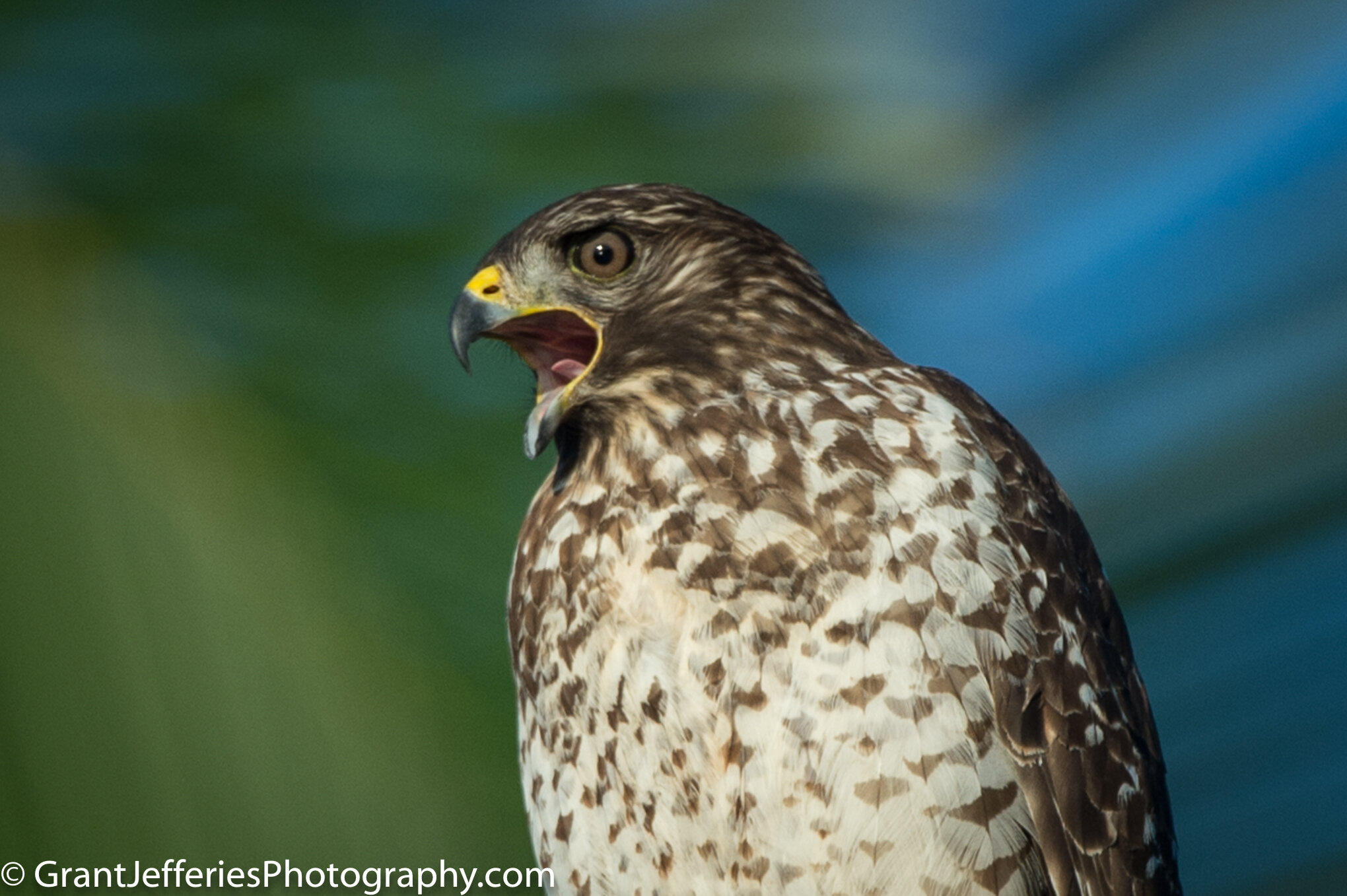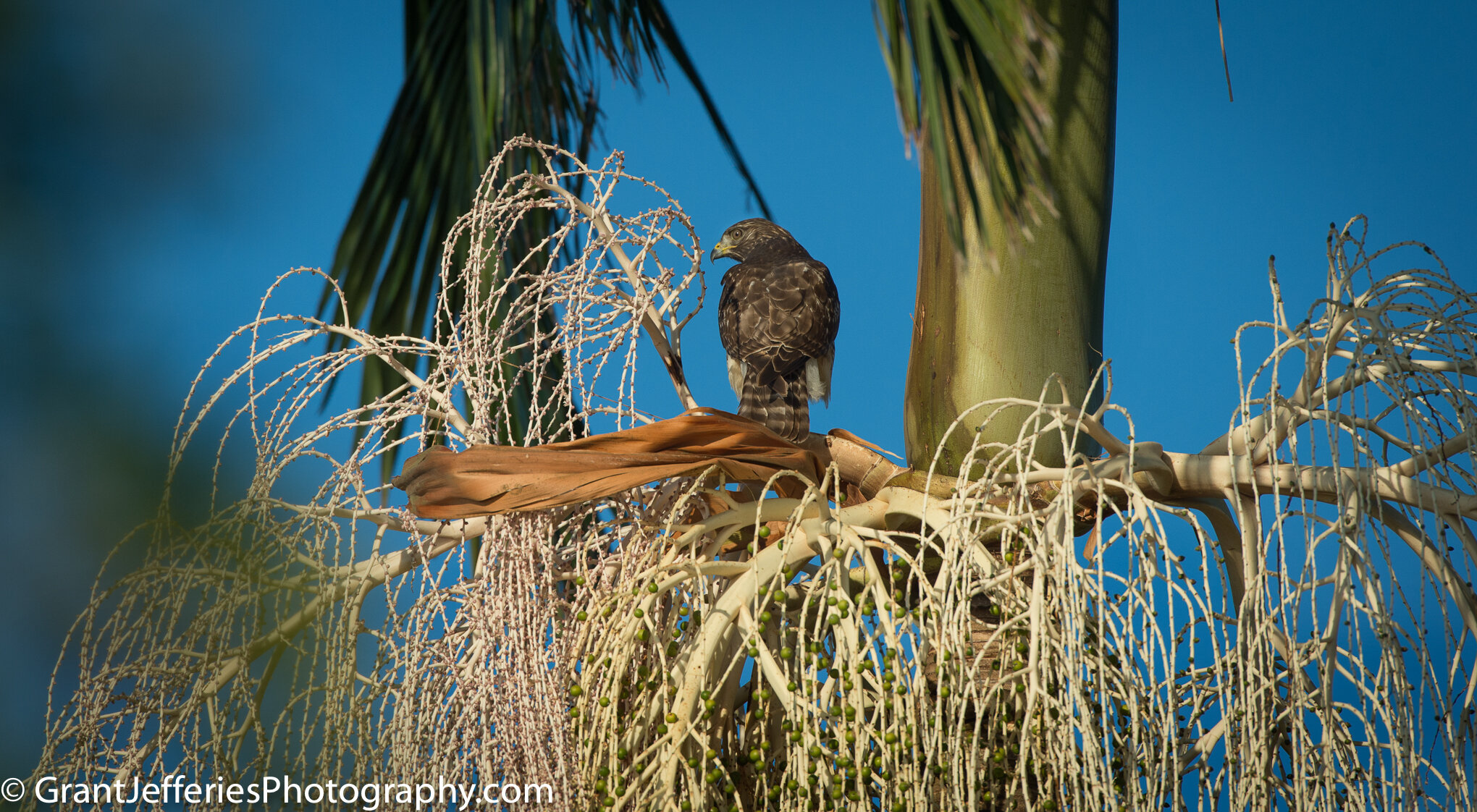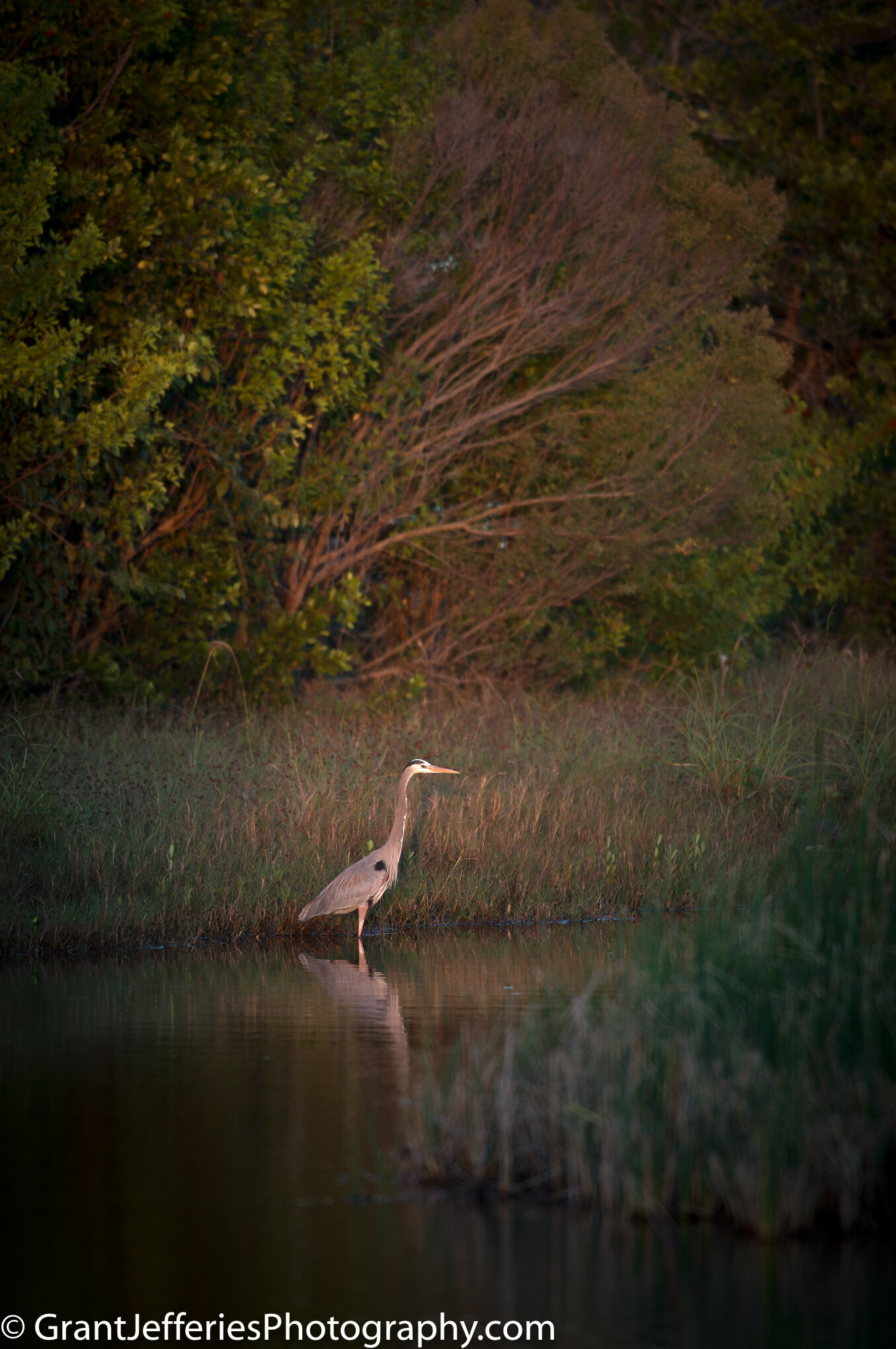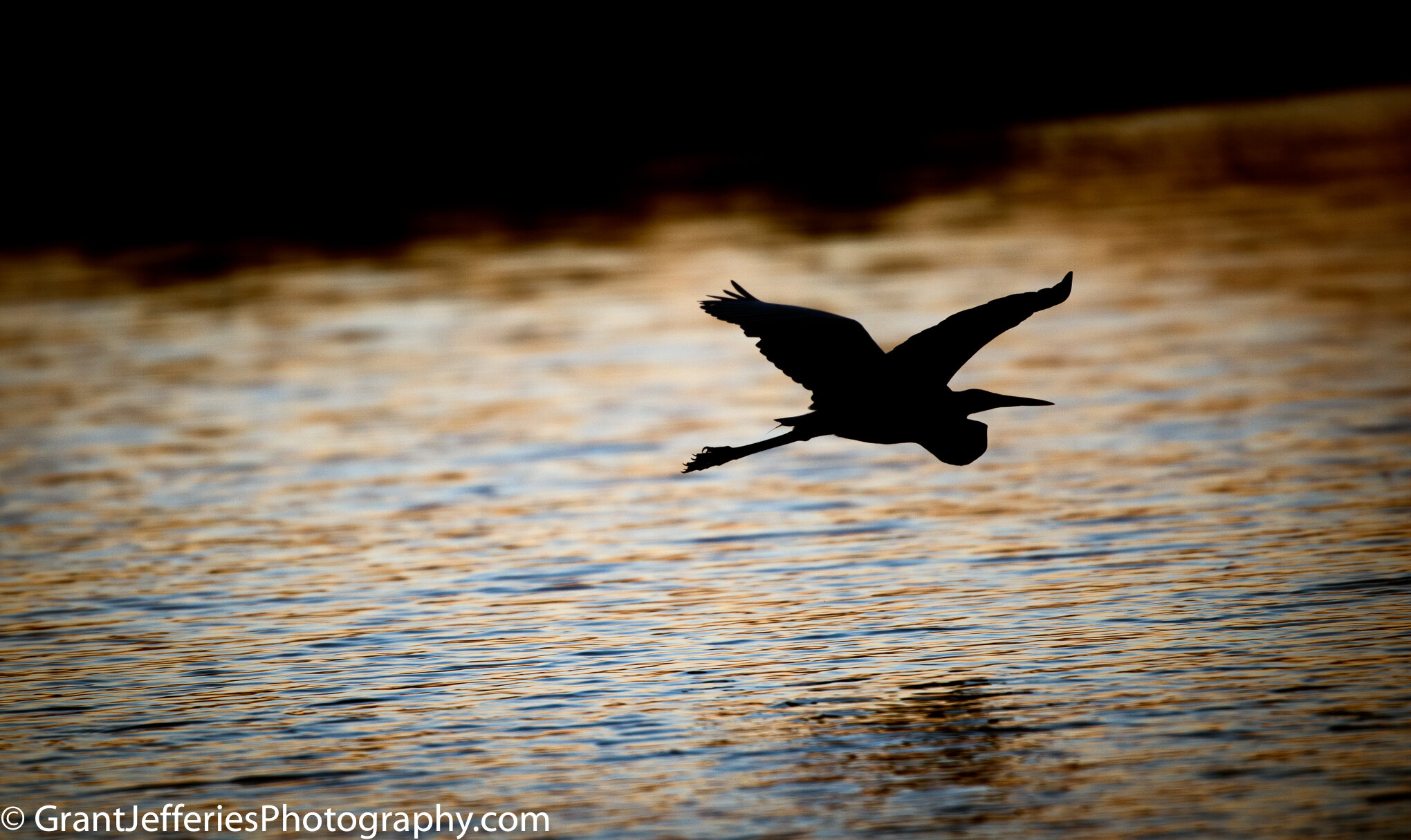I recently took a long hike with my wife and another photographer through a 5,800 reserve out in east Manatee County. It was the first hike I had taken in a long time where there was very little water and few birds. Instead, this hike held ancient trees, a rare commodity in this part of Florida, where developers are tearing down trees at an accelerated rate to build houses and shopping centers, and the government follows behind building wider roads and all the other things development entails..
We set out on our hike through Edward W. Chance Reserve’s Gilley Creek Tract along County Road 675. We hiked past a field of saw palmettos interspersed with trees. We noted the ruts from recent wild boar activity and we found a path bordered on one side by a farmer’s field and by the reserve property. We spotted a rare American Kestrel flying in the distance, and we kept walking. We were looking for a creek, but then I got distracted by the trees. Lovely old oaks and other hardwood trees. I saw a couple of snags in the distance.
I saw branches of the old tree poking through layers of vines and debris. Old trees are one of my favorite subjects so I set out across the field to make a picture. When I arrived and set up my camera, I couldn’t seem to find the right shot. The light was wrong and for a moment I thought the majestic tree was too far gone. But as I looked through the mess surrounding the tree, a beautiful form caught my eye. Almost at a crawl I worked myself, camera and tripod to the massive old trunk, worn by the years, and I found my photo.
I spent time with the tree, and then in my excitement, I called out to my hiking companions, who were out chasing hog photos — and who had already seen the tree — come here, i yelled, you have to SEE this tree. I wanted them to appreciate this old tree for what I had seen and for its part in nature. This tree had been home to birds, a solid hunting spot for birds surveying the fields and in the past shade to all of the wildlife that had passed under her branches. And here she is now, still solid, even though mostly naked of her own wardrobe, but covered in Spanish moss, vines and other debris. I hope you can appreciate this rare Florida beauty as well.

